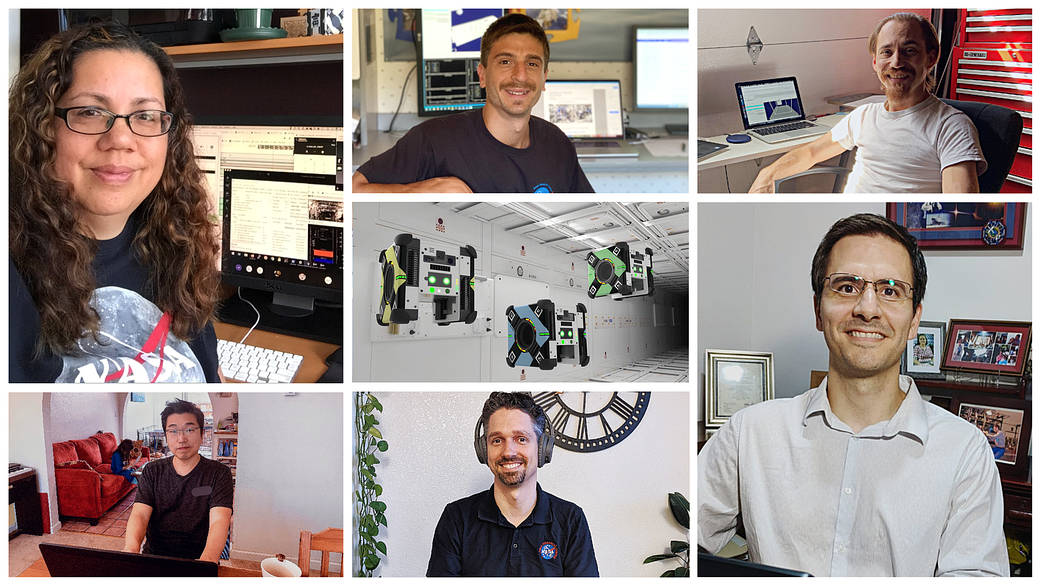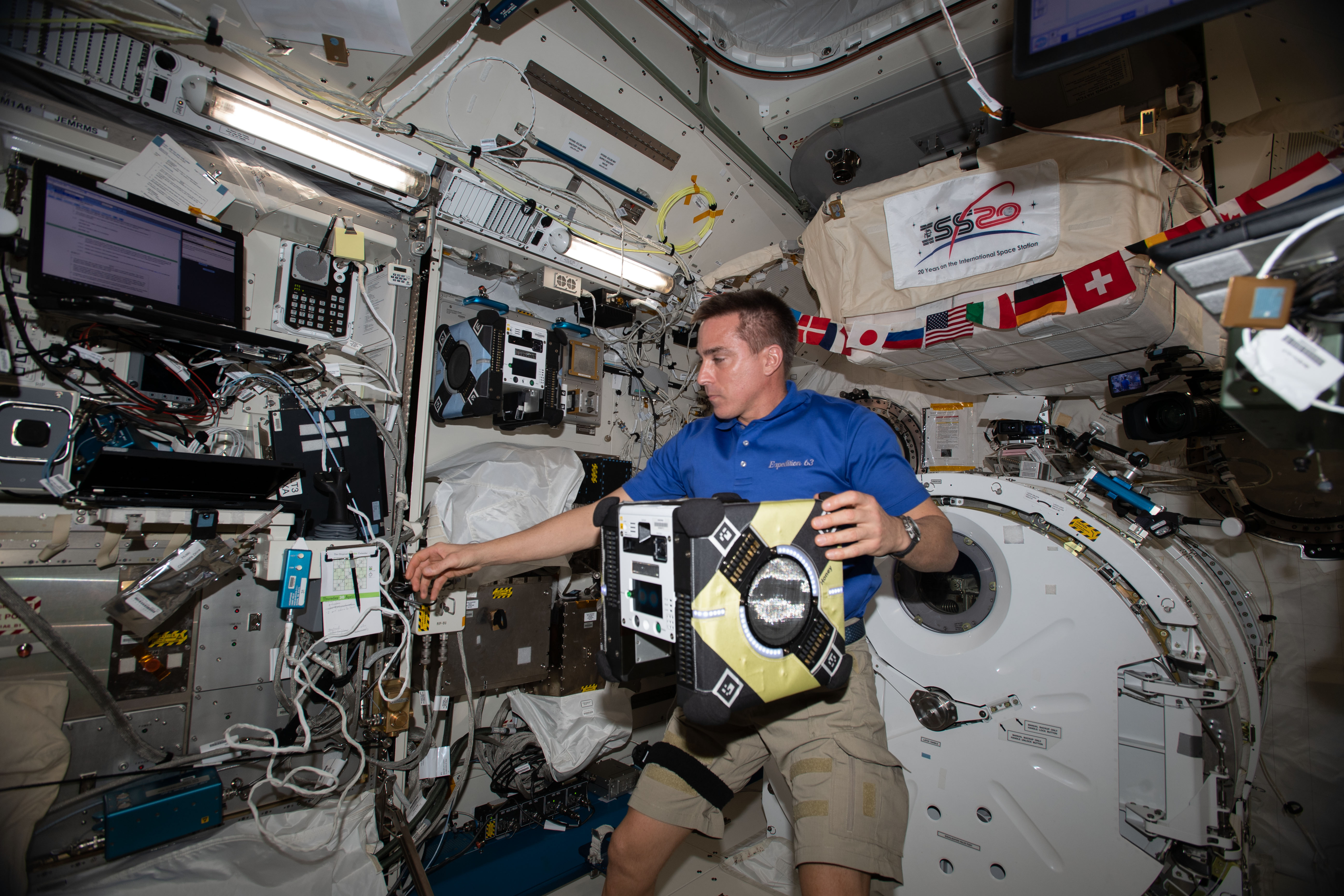Recently, NASA Astronaut Chris Cassidy performed a series of tests with Astrobee‘s free-flying robot, named Honey, to verify that it will be fully commissioned, like its robotic teammate, Bumble. Soon, both will be ready to carry out tasks and run science investigations aboard the International Space Station. Astrobee’s team conducted these activities teleworking from their individual homes.
The Astrobee team normally performs their roles running activities in space from an operations center at NASA’s Ames Research Center in California’s Silicon Valley. During such activities they communicate with crew, send commands to the robots and receive real-time telemetry. Because of the coronavirus (COVID-19) pandemic, the team needed to adjust to new conditions of full-time telework to meet NASA’s mission-critical need to advance autonomous and robotic technology that will play a role in the agency’s mission to return to the Moon under the Artemis program.
The robots rely on a map to safely navigate the interior of the space station’s Kibo module while they perform their tasks. Astrobee’s navigation system uses robot-mounted cameras to observe surroundings and compare what the camera sees to a map of the space station’s interior. During the session, Honey followed up on work performed by Bumble, checking the reliability of Astrobee’s mapping data. It also collected more images for mapping improvements.
Astrobee is a free-flying robot system that includes three robots — named Honey, Bumble and Queen — and a docking station for recharging. Tasks for Astrobee robots, such as keeping track of inventory aboard the station, will help increase astronaut productivity by offloading work spent on routine duties, allowing crew to focus more on the things that only humans can do. Additionally, robots can perform caretaking duties on deep-space outposts, such as the lunar Gateway, helping maintain spacecraft when astronauts are not aboard.
Main image: Clockwise from top left, Astrobee team members Maria Bualat, Roberto Carlino, Jose Benavides, Andres Mora Vargas, Jonathan Barlow and Sonny Hwang work from home. The center image is an illustration of Astrobee robots Honey, left, Bumble, center and Queen.
For news media:
Members of the news media interested in covering this topic should reach out to the NASA Ames newsroom.



























